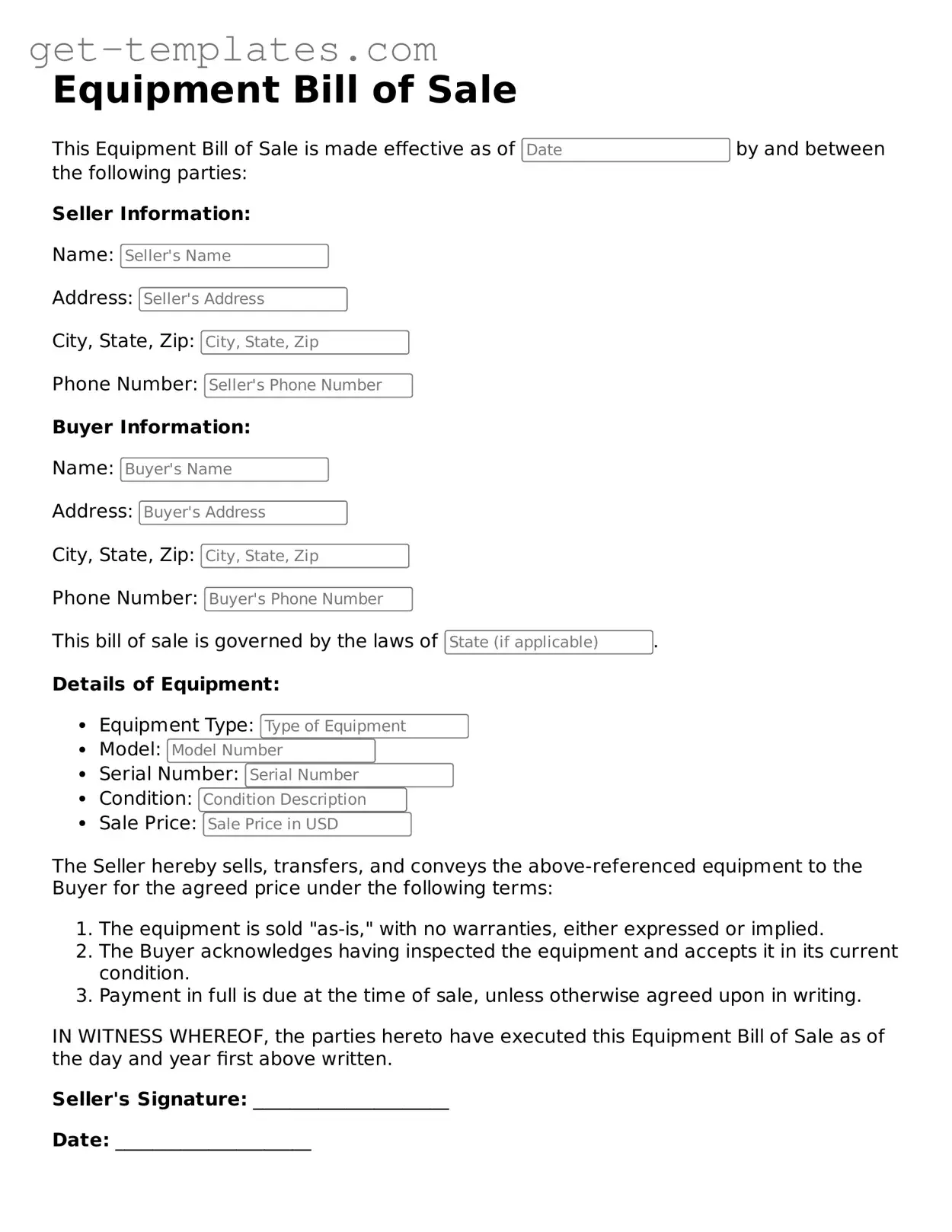Attorney-Approved Equipment Bill of Sale Form
The Equipment Bill of Sale form is a legal document that facilitates the transfer of ownership of equipment from one party to another. This form serves as proof of the transaction and outlines essential details, such as the description of the equipment and the sale price. Understanding its components is crucial for both buyers and sellers to ensure a smooth transfer process.
Get Document Online
